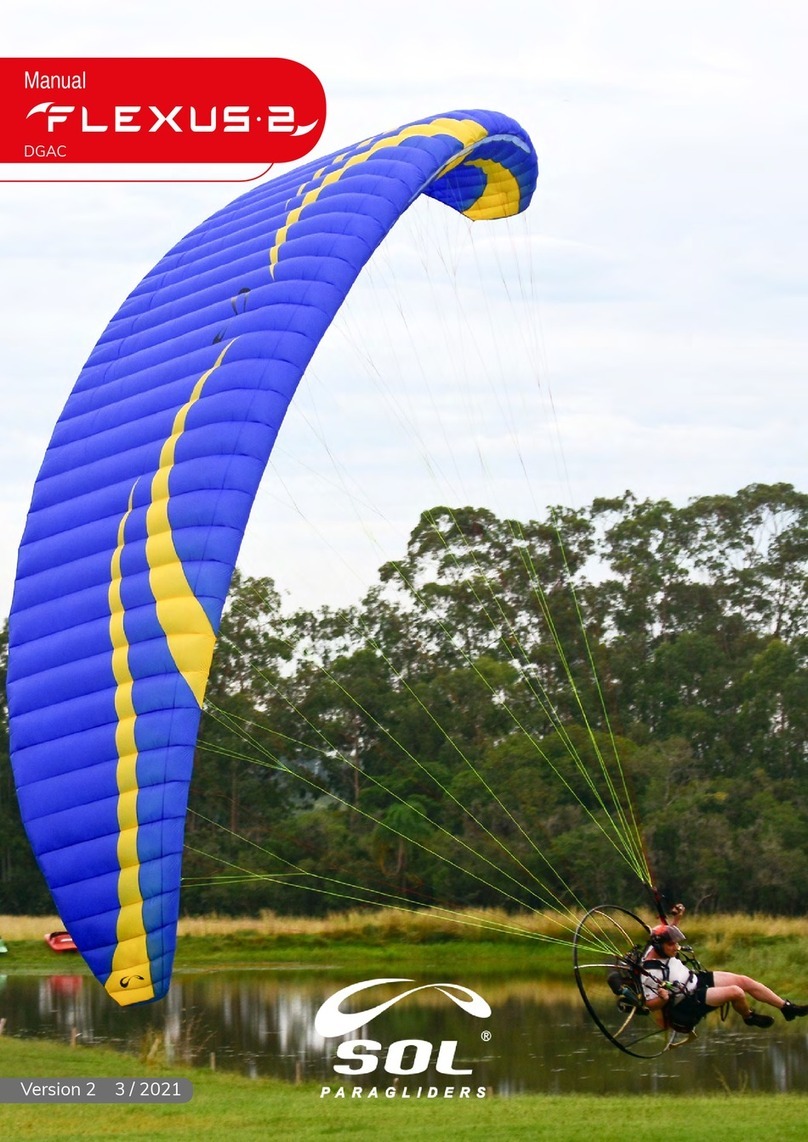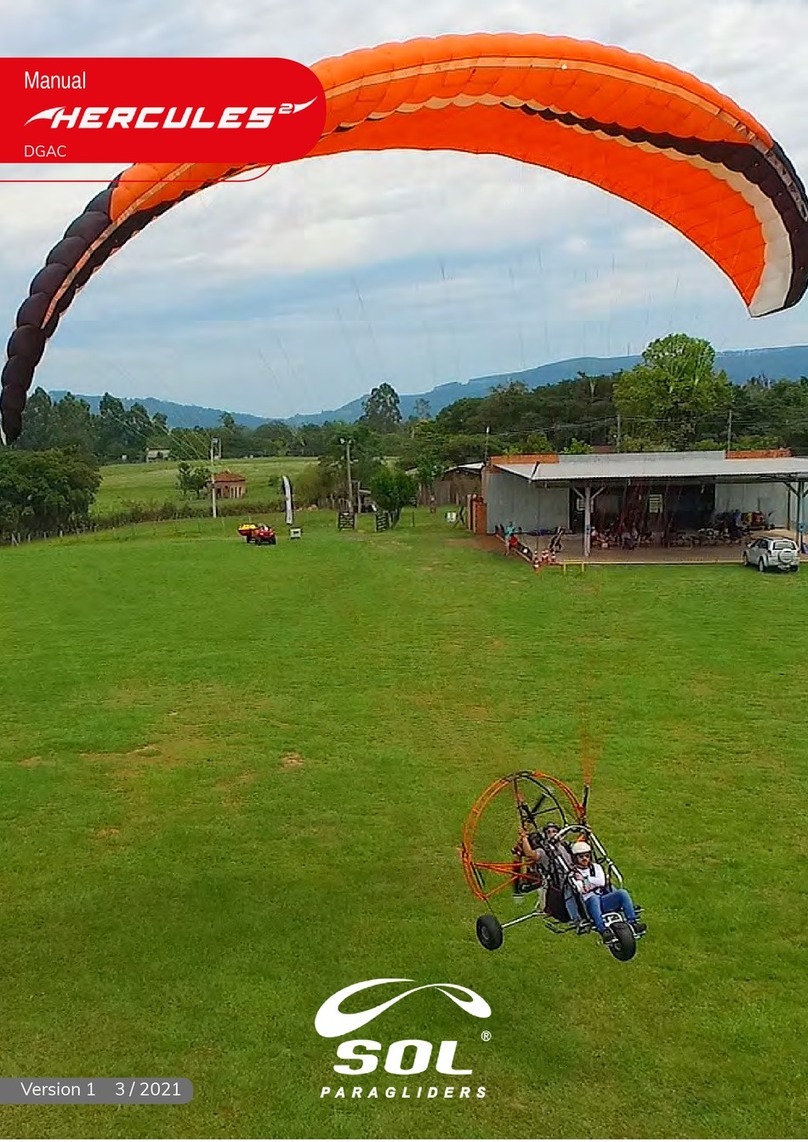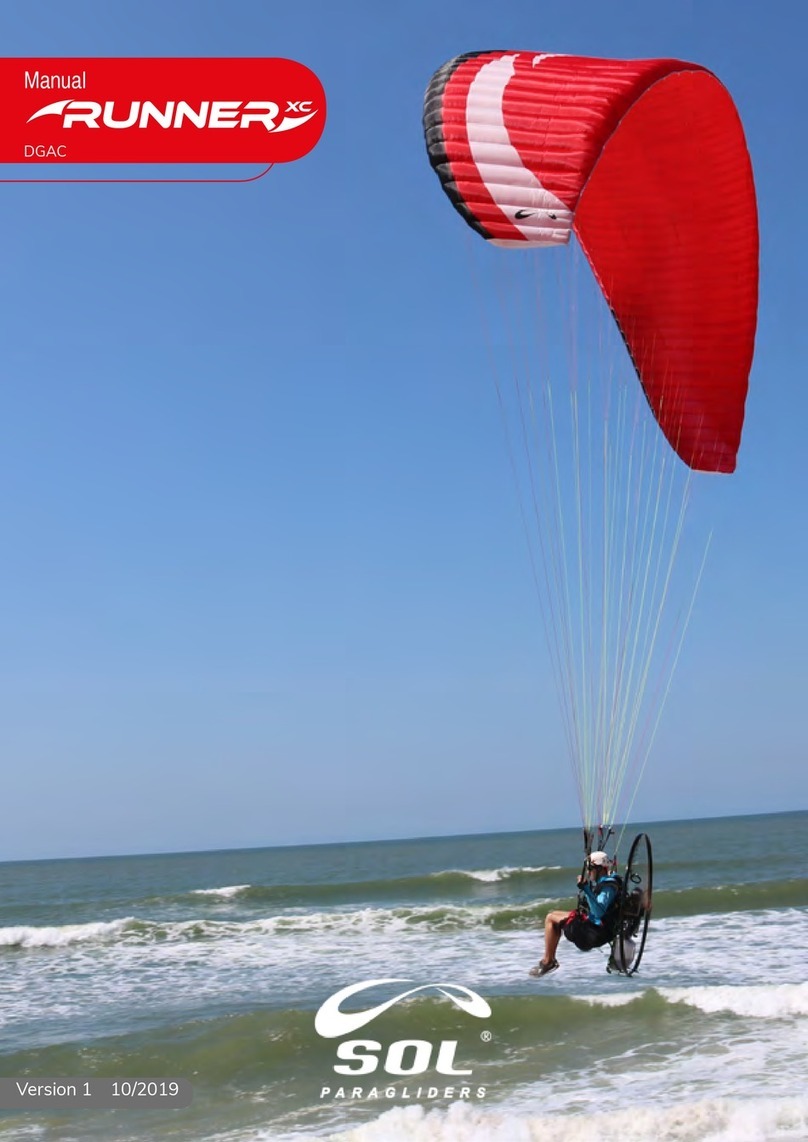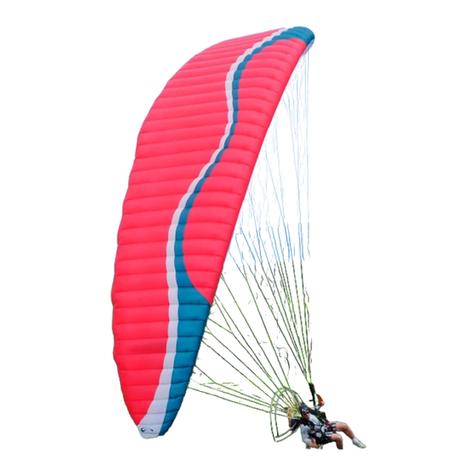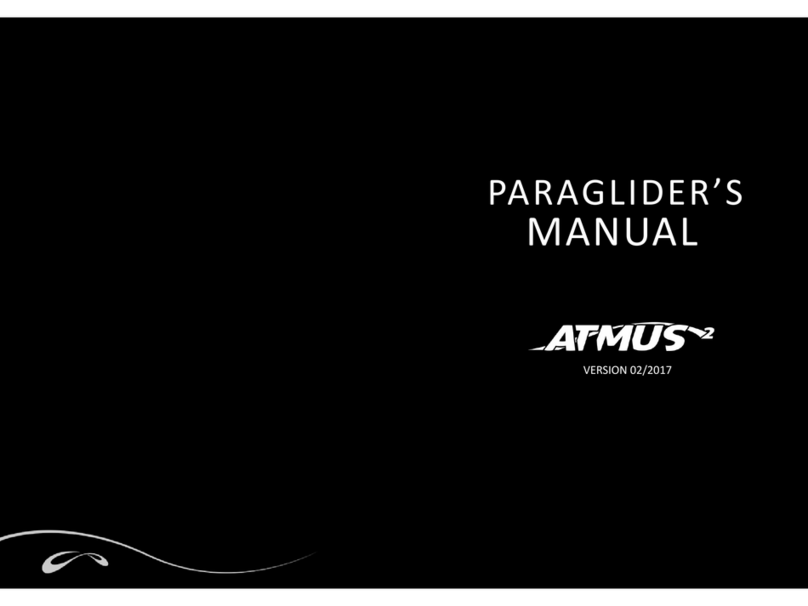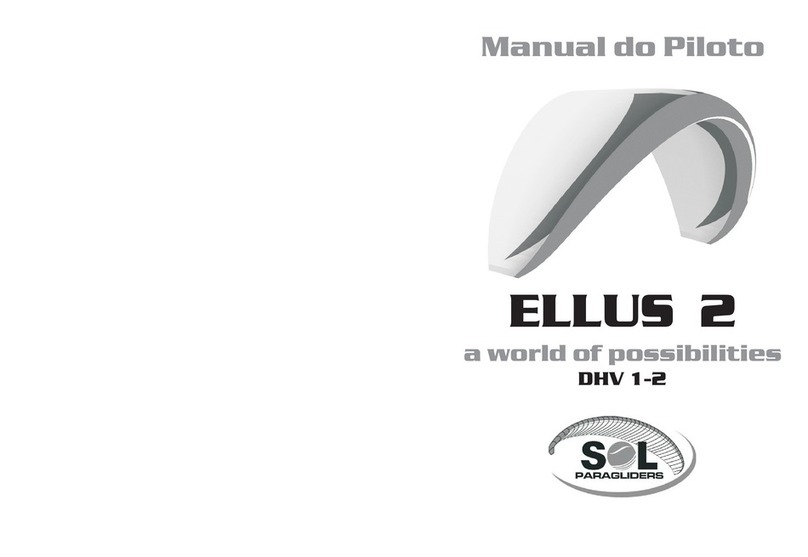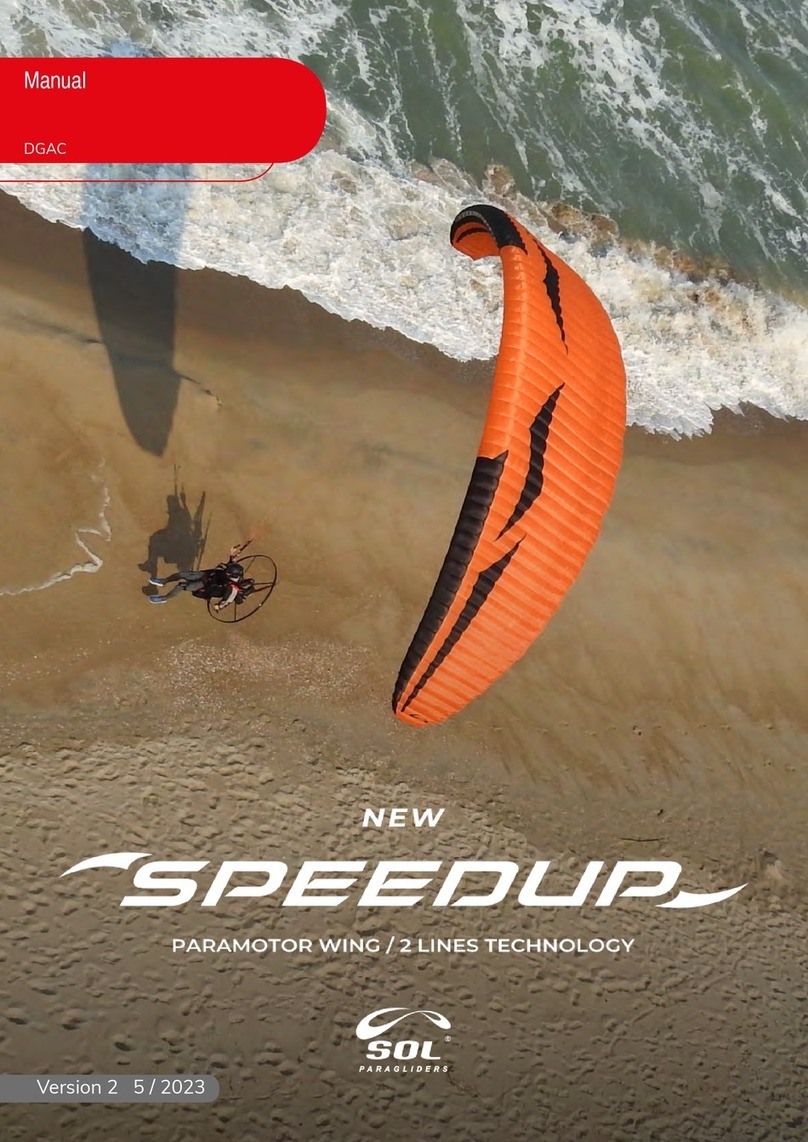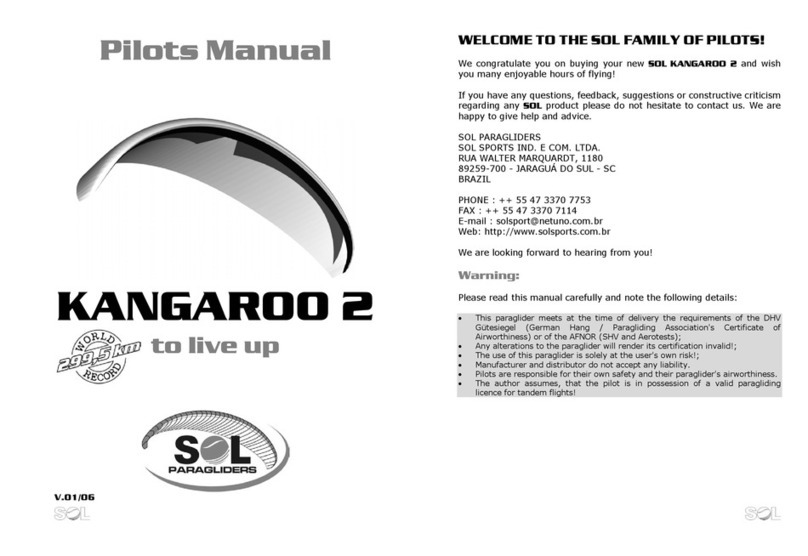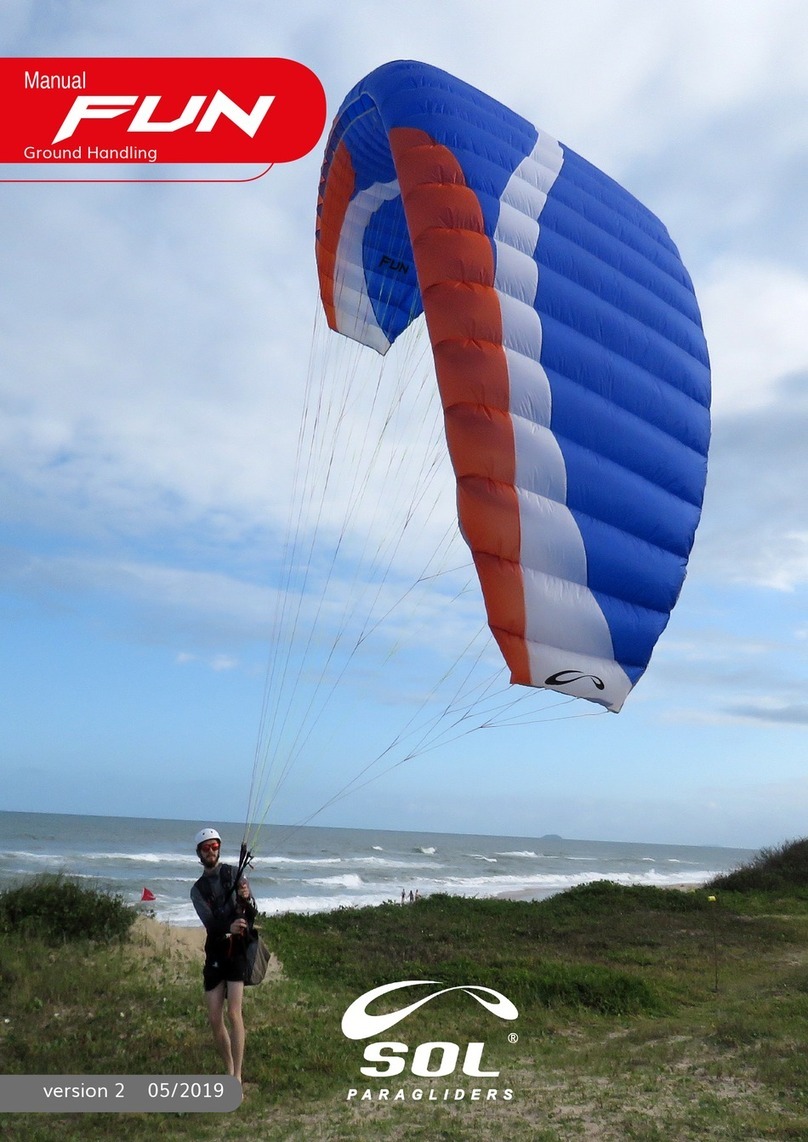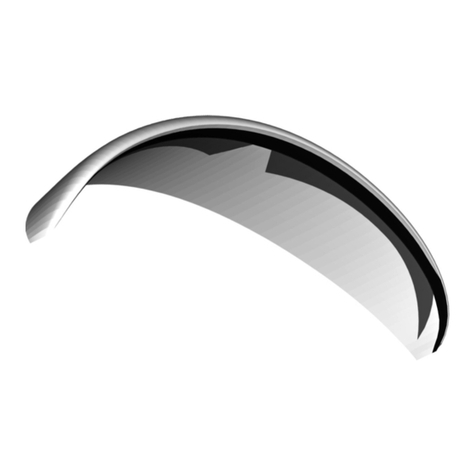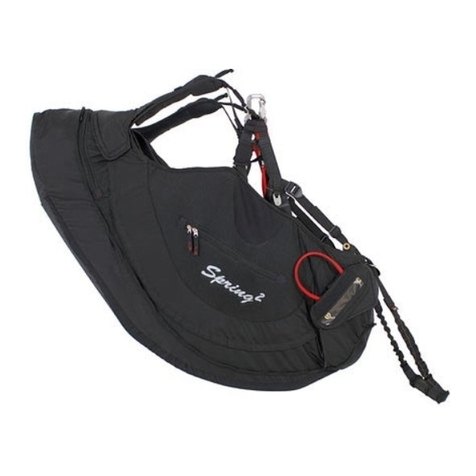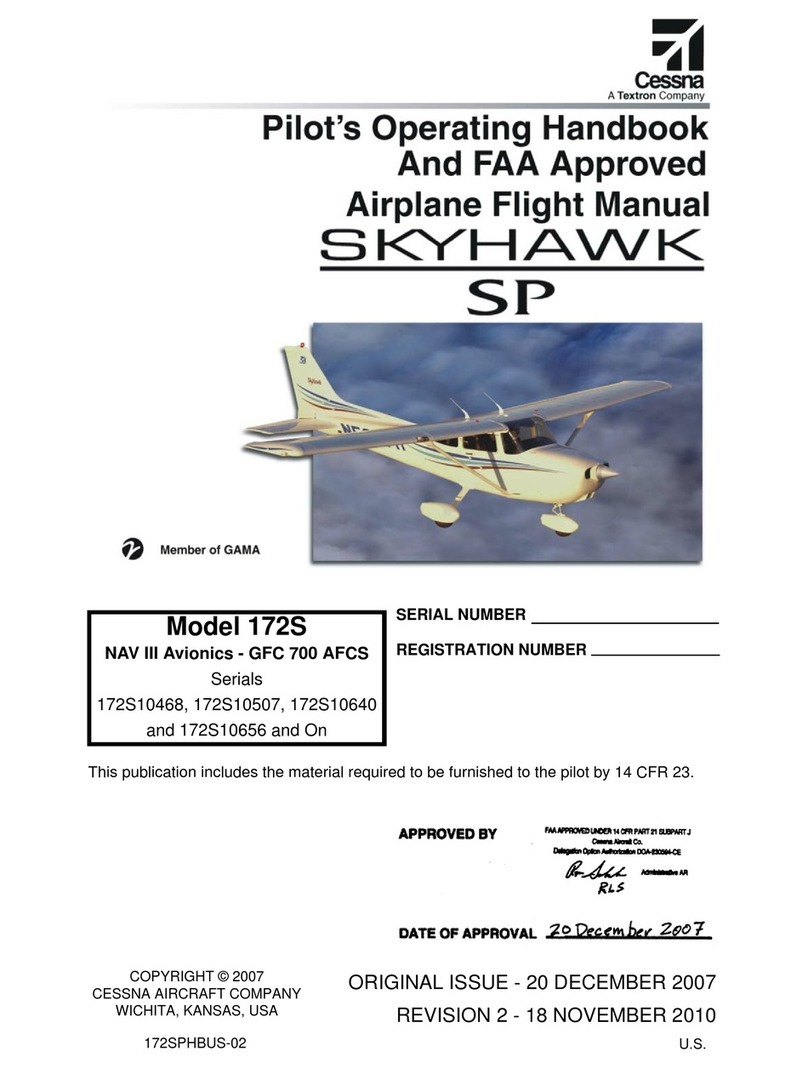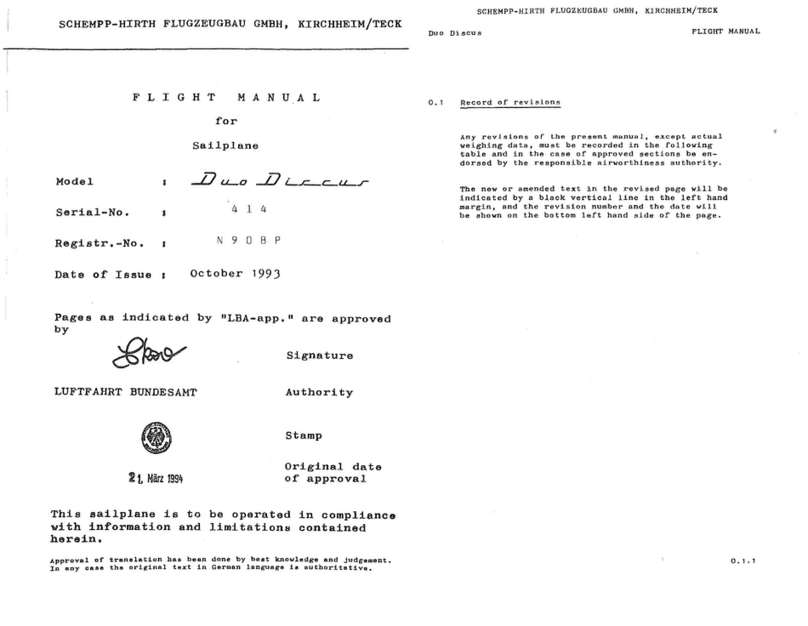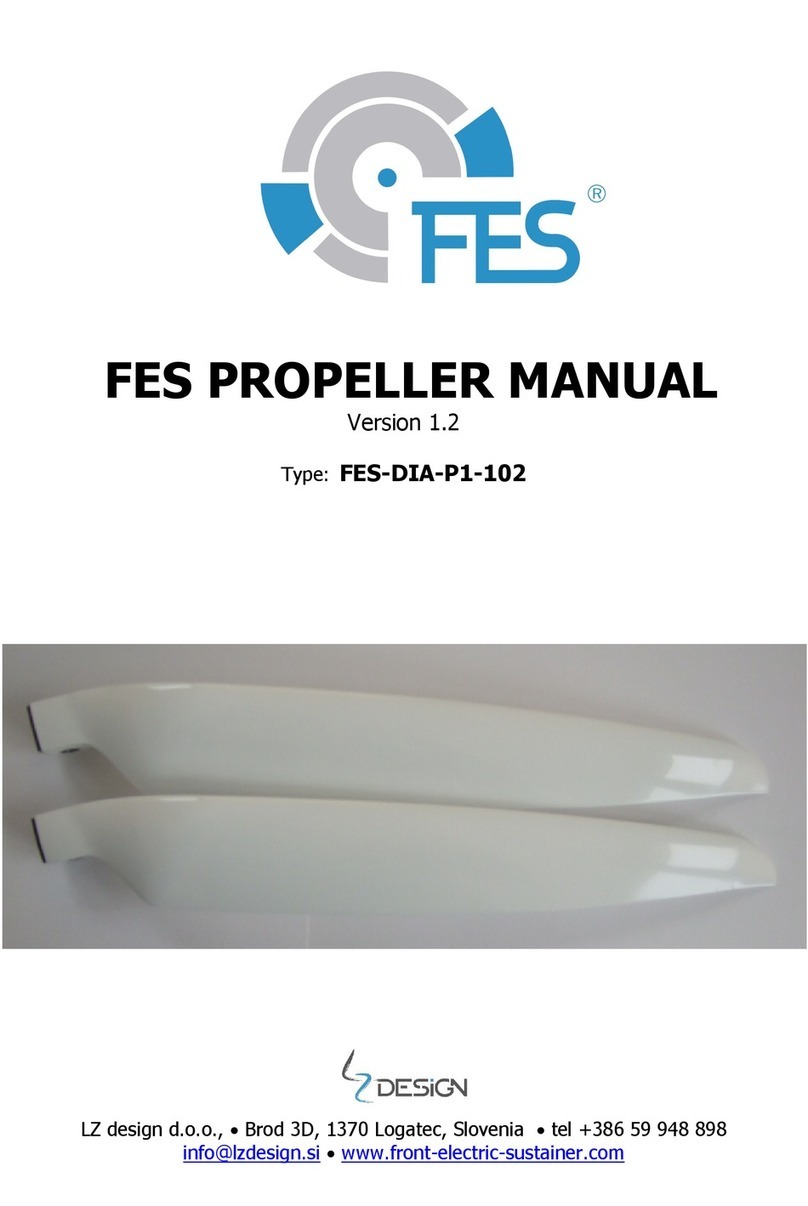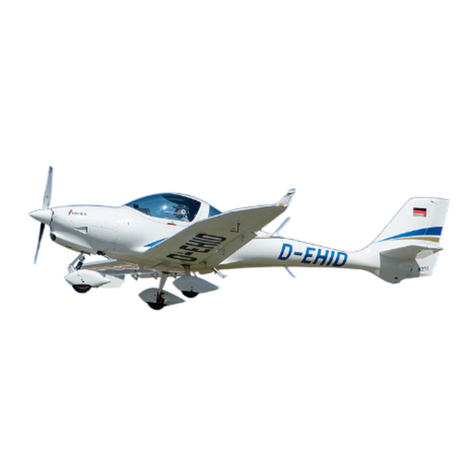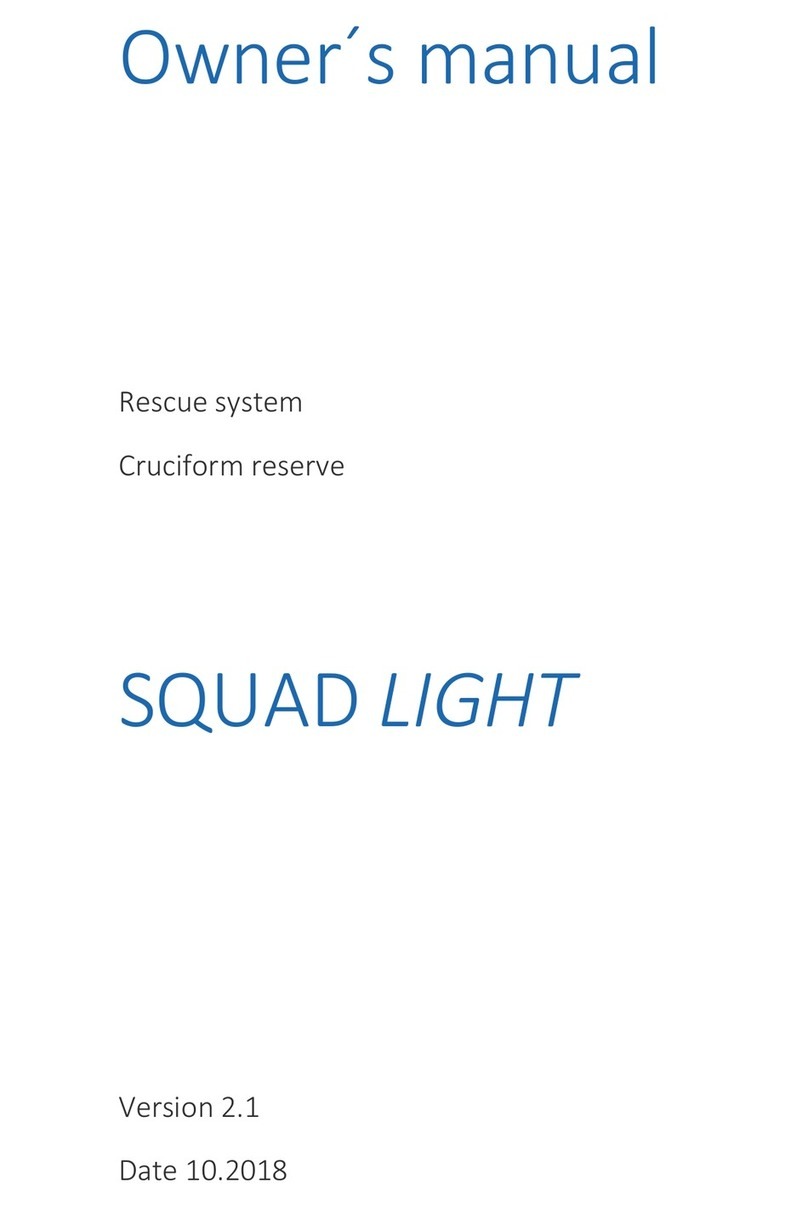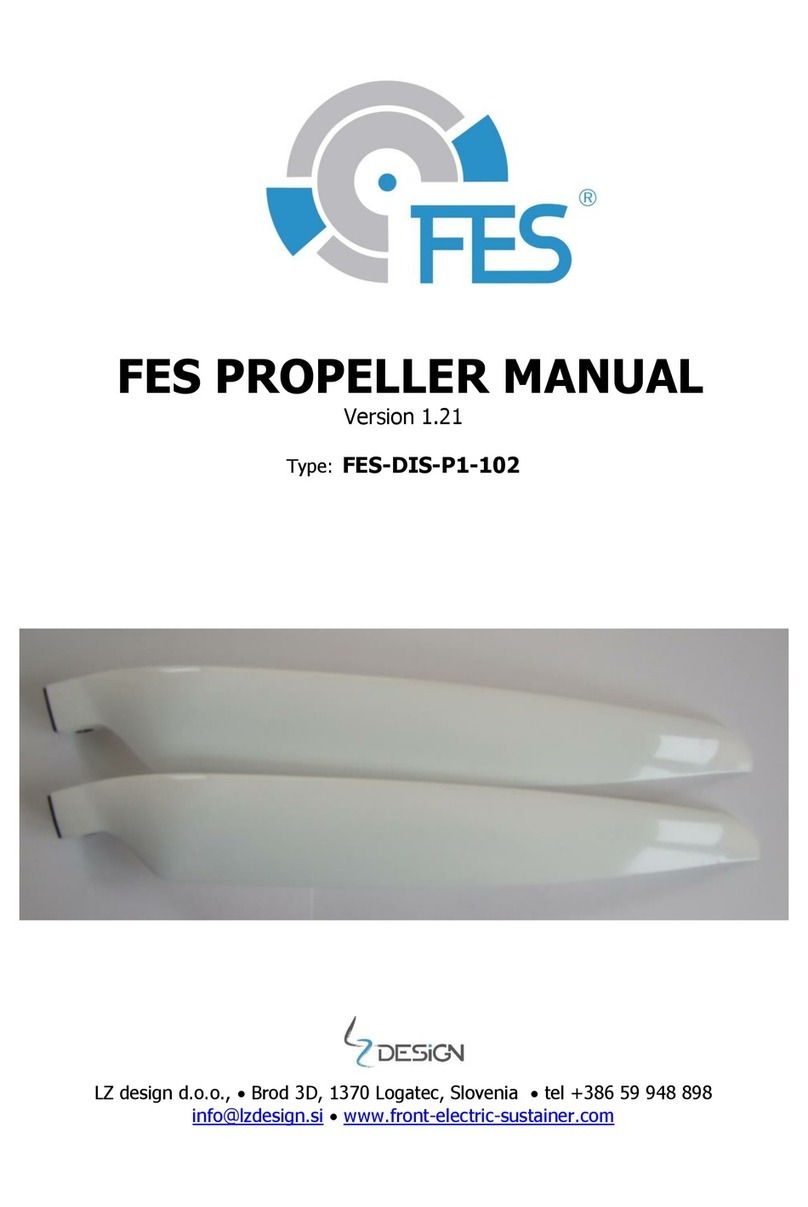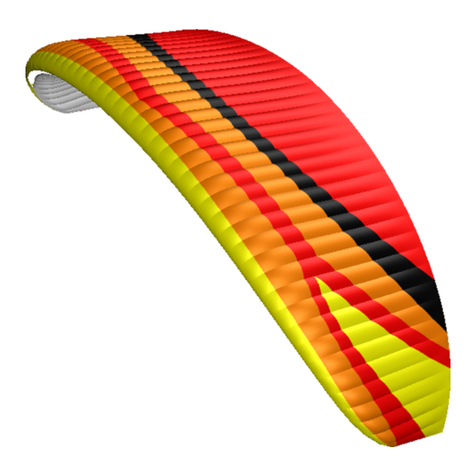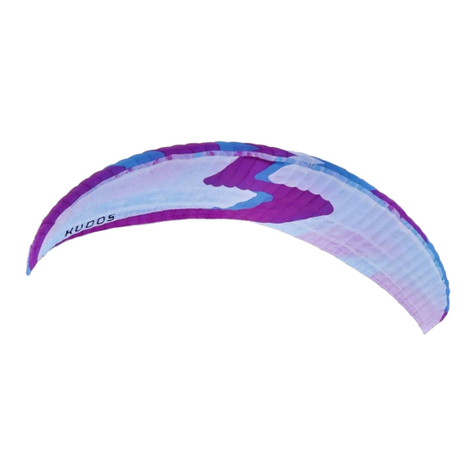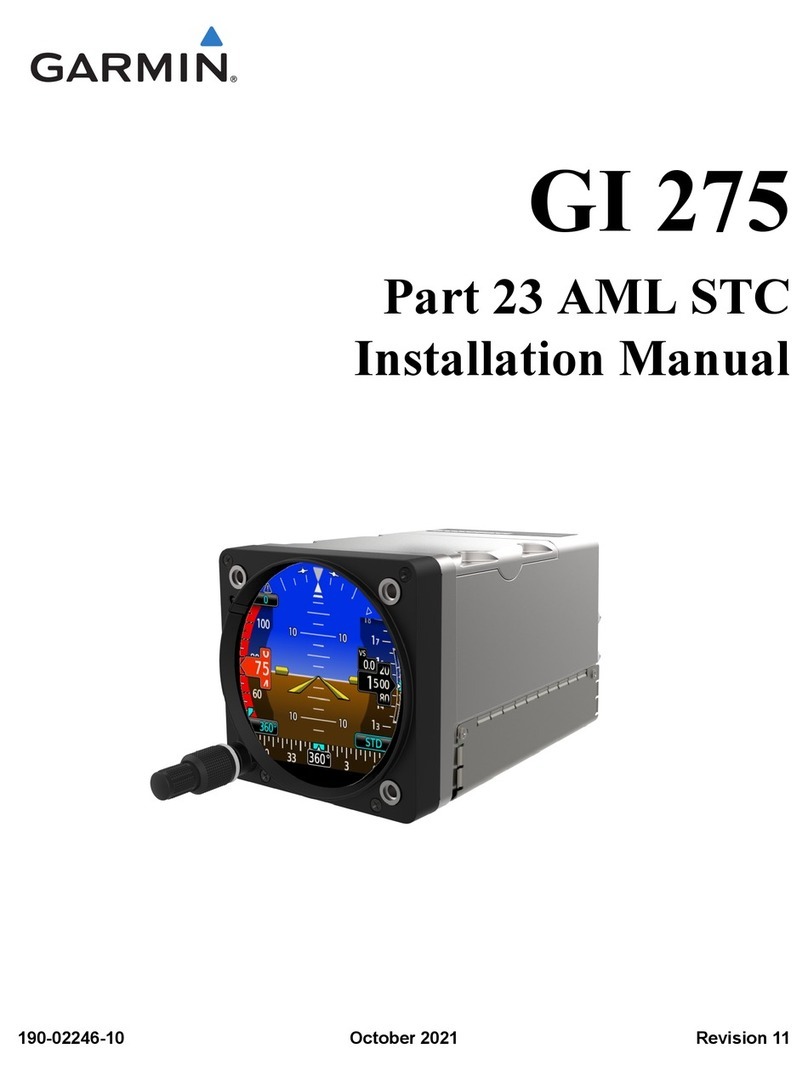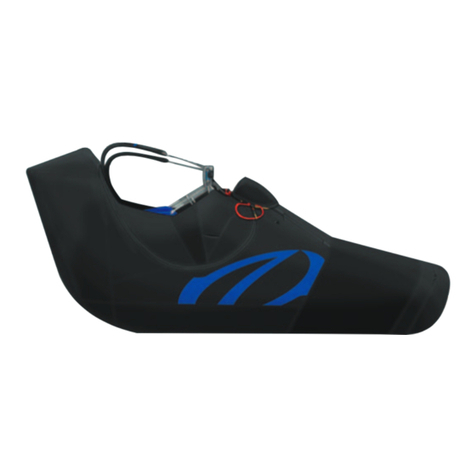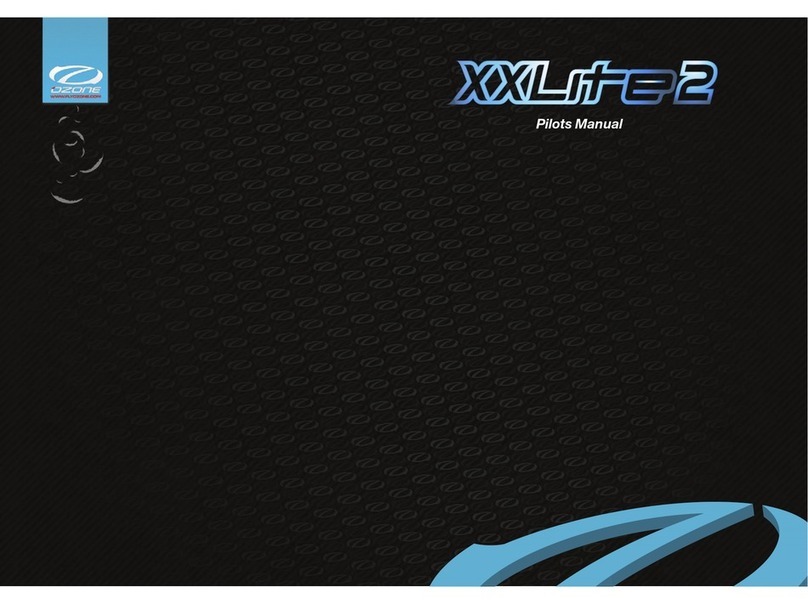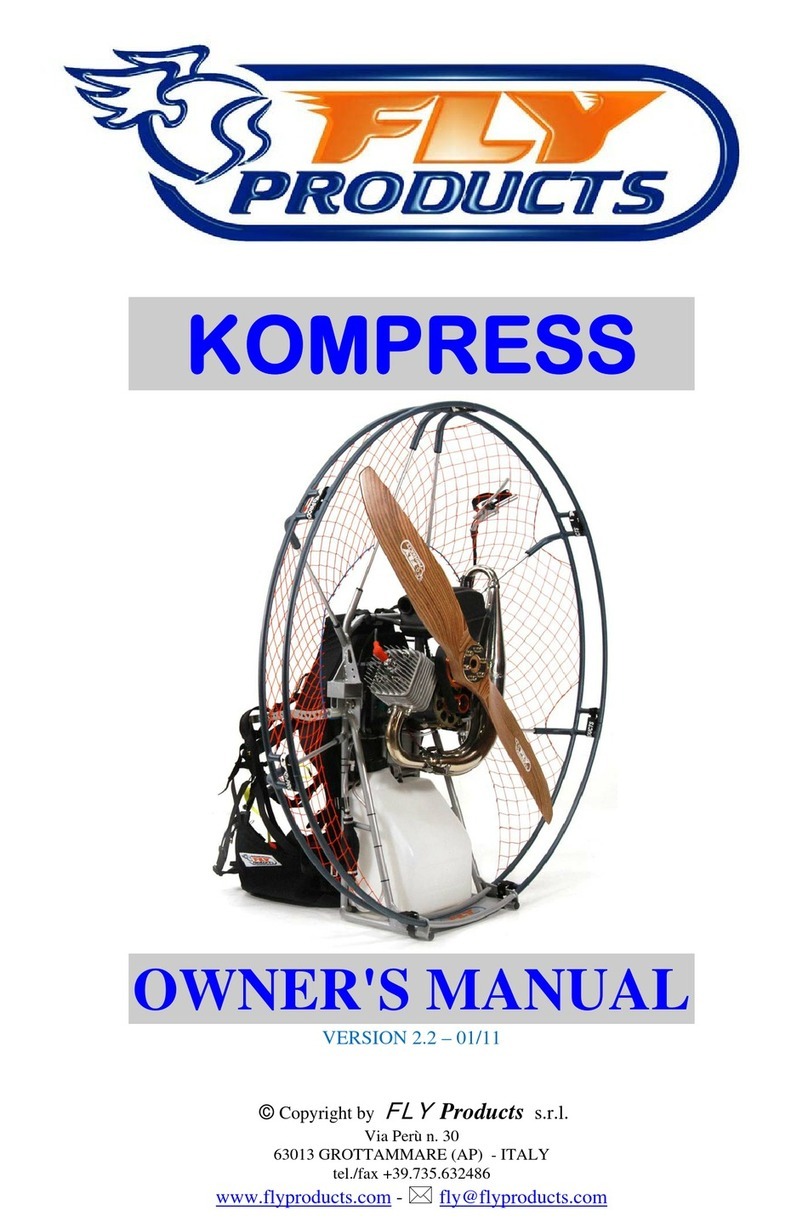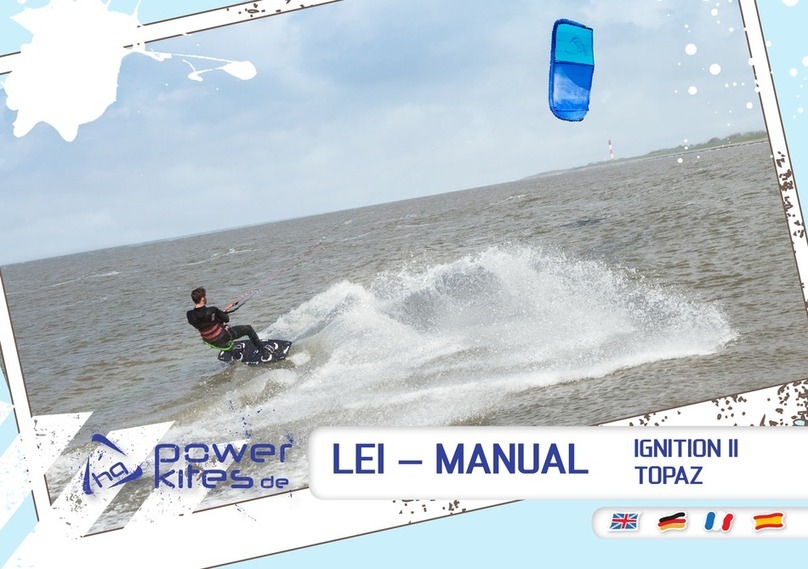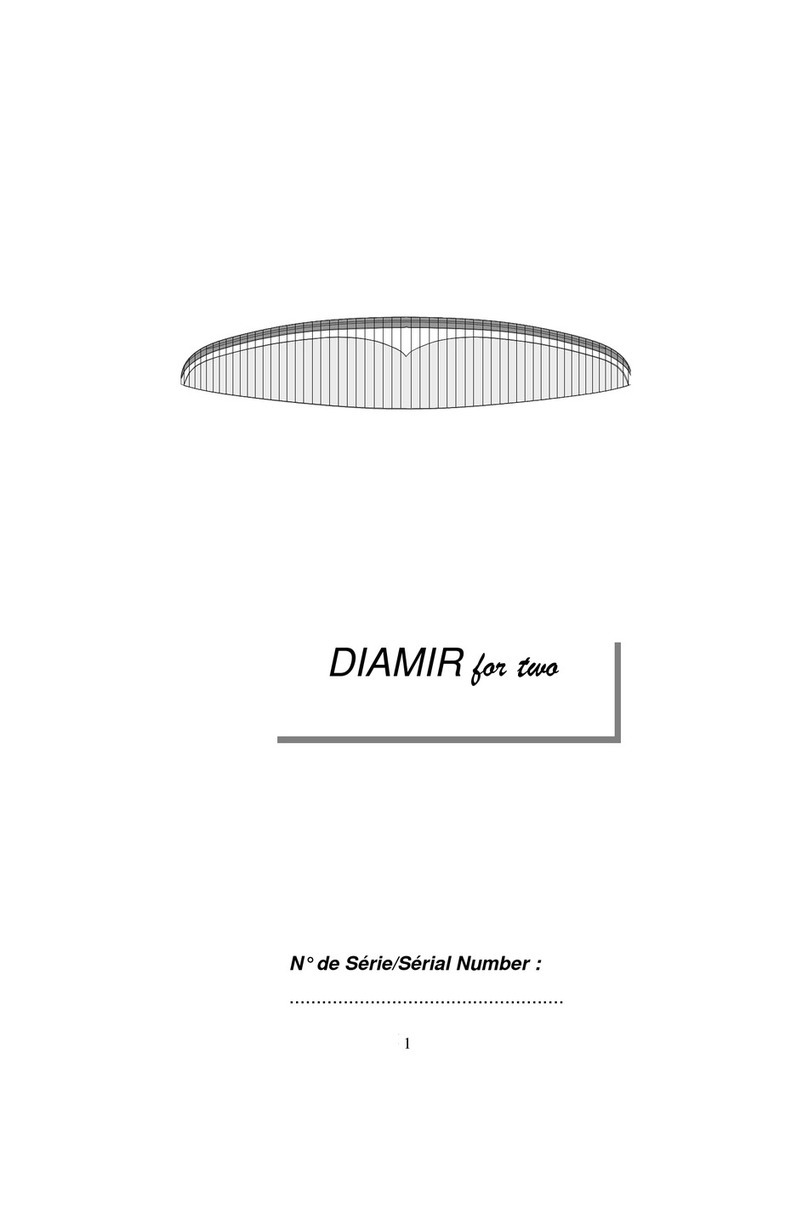
Asymmetric Deflations
A negative angle of attack will cause the SOL ELLUS, like any other
glider, to tuck. If one wing collapses, straight flight is maintained by
"correcting for direction" and braking gently on the inflated side. The
pilot's "correction for direction" can be aided by a pumping out the
deflation. A slow, long pumping action with the brake on the deflated side
of the wing helps the canopy to re-inflate.
In case of a big tuck, this braking should be very gentle to avoid stalling
the remaining part of the inflated glider. Weight shifting away from this
collapsed side also helps, allowing less brake to be used and thus a
greater margin of safety from the stall point.
If the pilot does not correct for direction, the canopy usually self-recovers
in smooth air with less than one complete turn. In case the canopy does
not recover by itself, the appropriate amount of brake must be applied to
correct for direction and exit the turn. Otherwise the glider will enter a
spiral dive.
If this spiral dive is entered, it should be exited by slowly and gently
applying the outside brake until the canopy starts to retain a level bank
angle. Just at this point, you pendulum under and in front of the canopy,
it is vital to partially release the brakes. Control any surges and return to
level flight. When the glider is flying straight and level again, "pump out"
the collapsed side.
Warning:
• If any spiral is not actively exited by the pilot, it will continue until
impact with the ground. Strongly engaged spirals can cause lost of
conscience due to high “G”forces induced.
Full Stall
To induce a full stall, evenly apply full brakes on both sides and hold the
brakes in that position with all your strength. The SOL ELLUS generally
flies backwards during a full stall and forms a front rosette.
The canopy must be stabilized (flying directly overhead) before letting
out the full stall. If the canopy is not stabilized and the full stall is let out
too early while the canopy still is sitting back, it will surge forward a long
way. To recover from a full stall, both brakes must be let up evenly at a
moderate speed (one second).
34
The SOL ELLUS surges forward a little bit after recovering from a full
stall. A collapse may occur if the surge is allowed to continue without
pilot input.
An "asymmetric" recovery (one control released faster than the other)
from a full stall is only used by test pilots to simulate a paraglider falling
out of a thermal and must not be practiced by pilots. If not done
correctly, this maneuver may result in a big dynamic collapse.
Warning:
• All rapid descent techniques should be practiced in smooth air and
with sufficient altitude so that they can be employed when necessary
in extreme flying conditions. Full stalls and spins are to be avoided as
the wrong recovery procedures, irrespective of the type of paraglider,
may have dangerous consequences.
• The danger of overcorrecting and overreacting exists during all
extreme flight maneuvers. Remember, any corrective action must be
gentle, steady and done with feel.
Deep Stall
The SOL ELLUS generally does not remain in deep stall and is self
recovering when releasing any brake or riser input originally used to
enter the stall.
In case the recovery from a B-line stall was not dynamic enough and the
canopy remains in a deep stall, it is necessary to gently pull down both
A- risers to reduce the angle of attack and reattach the airflow to the
canopy.
Flat Spin
A spin is induced when the pilot at full speed (DHV tests) or in very slow
flight (AFNOR tests) pulls one brake line all the way down very hard and
very quickly. During a spin the pilot turns relatively fast around the
center section of the canopy while the inner wing flies backwards.
To recover from a unintentional spin, the brake/control line you have
pulled down should be immediately released as soon as the situation is
noticed so that the canopy may accelerate and return to its normal
straight and stable flying position without losing too much height.
In case the spin is allowed to develop for some time, on exiting the SOL
35




















